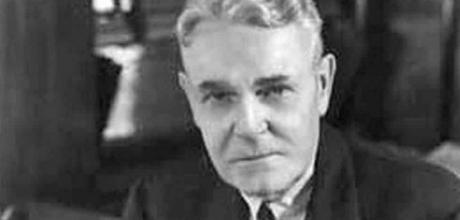Karl Probst 1883-1963
Karl Probst …without whom the US Army Jeep might never have existed.
Gone but not forgotten
WORDS DELWYN MALLETT
In Dayton, Ohio, on Sunday 25 August 1963, retired engineer Karl Probst unfolded the plans he had drawn 23 years earlier for what would become a landmark in the history of the automobile. Then 79 years old and suffering from cancer, he laid them on his bed, took one last look at them and swallowed a fatal dose of sleeping pills.
The son of a doctor, Karl Knight Probst was born in October 1883 in Point Pleasant, West Virginia, and like so many youngsters of the era he was smitten by the newfangled motorised vehicles. At 13, displaying a precocious mechanical aptitude, he built his own steam-powered bicycle. Unfortunately, it exploded.
Set on a career in engineering, he enrolled at Ohio State University but was forced to drop out due to illness. In the years before WW1 he continued his engineering studies in France, where he was impressed by the Bédélia, a tiny and narrow tandem-seat cyclecar powered by a front-mounted V-twin motorcycle engine driving the rear wheels via a long leather belt, with the driver steering from the rear seat.
Returning to the US and a job with the Auto Parts Manufacturing Company of Detroit, in 1912 Probst designed one of the nation’s first cyclecars, incorporating a radical departure from the norm in the form of front-wheel drive and front driver. Named, rather curiously, after the extinct, flightless bird, the Dodo – but capitalised as DODO – it too failed to take off and to Probst’s irritation only one was built.
He promptly resigned, moving to Toledo and a post with the Milburn Wagon Company, producer of electric cars. Probst also served spells with Chalmers, Lozier, Peerless and Milburn before becoming chief engineer at REO. However, in 1920 he was once again sidelined by bad health and he left the auto industry and started a new career in real estate.
The Wall Street Crash in 1929 put paid to Probst’s real estate business and he rejoined the automotive community, opening his own consultancy in Detroit. It was there in 1940 that he was offered a commission that, at first, he found only too easy to refuse – particularly as he would be working on spec.
With the inevitability of having to join the war that was already raging in Europe, the US Army was desperately in need of updating its military ordnance, and the Quartermaster Corps (QMC) raised a tender for a lightweight four-wheel-drive reconnaissance vehicle. The brief was sent to an astonishing 135 manufacturers with an almost impossible deadline: 11 days to respond with plans and 49 days to build 70 prototypes. Not surprisingly, only four companies replied.
American Bantam, the company that had evolved out of American Austin, had discovered the hard way that Americans were not enamoured of small cars and was teetering on the very edge of bankruptcy. It had already proposed a lightweight vehicle to the Army in 1938 and was somewhat miffed to discover that it was now in a contest with so many other competitors. A lucrative contract could pull the company back from the brink but, with a skeleton staff of only 19 people left, help was clearly needed. A reluctant Probst finally heeded the call after pressure was applied by ‘Big Bill’ Knudsen, the former head of GM and by then serving as head of the War Production Office, who said that it was his patriotic duty.
Probst jumped into his car and arrived at the virtually deserted Bantam works in Butler, Pennsylvania, on Wednesday 17 July, five days before the 9am 22 July deadline to present its as yet unresolved proposal. Working closely with Bantam’s chief engineer, Probst set up a drawing board and got to work. By the Friday, after virtually non-stop work, he had draughted the blueprints of the vehicle that would become a legend. By the Sunday the costings were complete, but there was one insurmountable problem – the design was 500lb over the specified weight. Nevertheless, Probst and Bantam’s chairman sped 300 miles to the QMC offices in Baltimore, where they joined the other bidders from Ford, Crosley and Willys.
The only serious competition came in the form of a lower bid from Willys, accompanied only by a crude sketch, so just 30 minutes after its presentation Bantam was awarded the contract. With a sting in the tail. The QMC concluded that Bantam lacked the means of producing the vehicle in the required quantities and passed the plans to Willys and Ford. After incorporating their own modifications, they eventually produced over 600,000 of what is now universally known as the Jeep.
In 1943 Willys, sensing the Jeep’s post-war potential, attempted to register the name but Bantam protested. In 1948 a Federal Trade Commission tribunal, at which Probst testified, forbade Willys to claim that it invented the Jeep and declared that Bantam was its originator. It was not until 1950 that Willys finally registered the name. Probst never claimed, as many did, that he was the ‘father of the Jeep’ but he did say that his part in its design was the highpoint of his career. One can only imagine the thoughts that raced through his mind as he took a last look at his plans on that fateful day in 1963.
Oh, and Probst eventually received $200 for his contribution to the creation of one of the world’s most significant vehicles.

Left, from top Karl Probst never claimed to be the Jeep’s sole author, but he certainly played a role in it; pre-production Bantam is clearly related to the finished Jeep.


